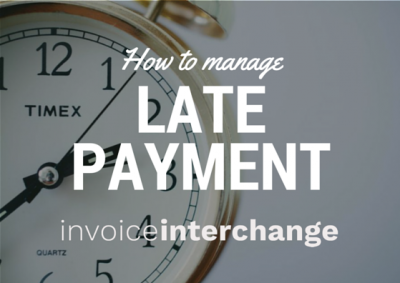
How to manage late payment
On average, 44.8% of invoices in Singapore are still outstanding on their due dates, 25% are still outstanding after more than 30 days past due date. There are several pertinent reasons why SMEs have difficulty overcoming this problem. In this article, we will be looking at some of the reasons of late payment as well as how to manage late payment for SMEs.
Limited resources
Many SMEs just do not have the capacity and the resources to properly and effectively manage late payment / collections. It boils comes down to what the business priorities are, whether to prioritise on closing deals or spend time and energy on chasing late payments.
Lack of collection process
This usually stems from the above (limited resources). Majority of SMEs do not have a dedicated resource or process in place to follow up on their late payments and bad debts. There is no escalation process in place, who do they need to speak to in order to expedite payment.
Above all, SMEs usually do not have the resource to pursue legal action which put them in a vulnerable position. This allows customers, especially large ones to take advantage of these SMEs.
Reputation/relationship may be at stake
Many SMEs are fearful of jeopardising their relationship with their customer if action is taken against their customer on late payments. SMEs would want to strive to maintain a good and cordial relationship with their customers. In addition, SMEs generally do not want their customers to be alarmed or question the SME healthy cash flow position. Many customers may perceive that their supplier (the SME) may not be in a financially strong position and therefore poses a risk to continuous supply. All of these could cost SMEs’ any potential future sales with their customers.
How to manage late payment
Government assistance
Strong support from government is necessary.
In the EU, the European Commission (EC) has recognised the impact on the European economy caused by late payments. To combat this issue, as well as to protect their SMEs livelihood, the EC has implemented the following:
- Public Authorities are required to pay for their goods and services within 30 days. In very exceptional circumstances they can pay up to 60 days.
- Enterprises are required to pay their invoices within 60 days. In exceptional circumstances and on a case by case basis the payment period can be mutually agreed upon.
- Provide interest for late payment as a compensation to recovery costs.
Invoice Financing Facilities
Having an Invoice financing facility will allow SMEs to obtain payment against their outstanding invoices at a minimum fee. This could help ease the pain of late payments that the SMEs are experiencing. The business community recognises such a need. Traditional lenders such as Banks and Invoice Financing companies have been offering this service for many decades.
Today a new generation, invoice financing – peer to peer (P2P) invoice trading, is now available for SMEs. The main differentiations between P2P invoice trading and the traditional invoice financing are the flexibility and speed. P2P invoice trading is able to assess application and advance cash in days, as well as allowing SMEs to sales invoices as and when they need to. The costs are minimal and the trading of the invoice does not require further collateral other than the invoice itself.
Education
Providing education to SMEs on how to manage late payment would be extremely useful. As well as an overview of the potential financial gain from implementing the collection process.
Reference
Late Payment Directive, European Commission, 2011
Related Articles

The Working Capital Challenge: How Long Credit Terms Could Be Holding Your Business Back

Understanding the Impact of Chinese New Year on Cash Flow: A Guide for SMEs
